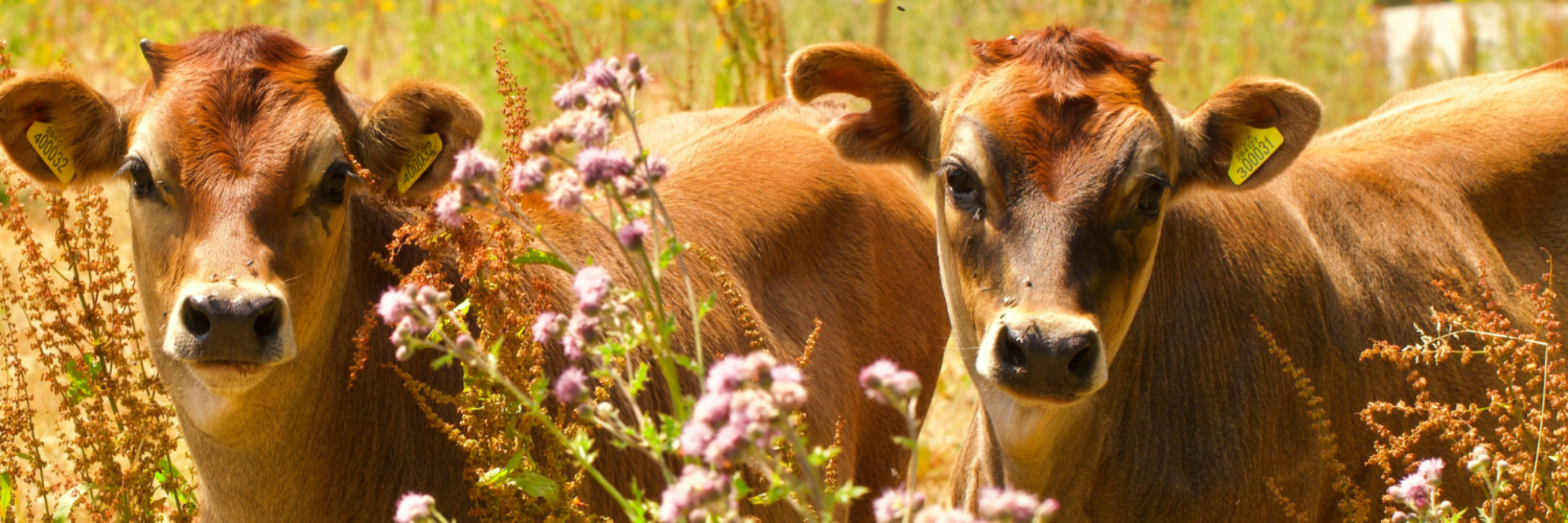Calf Health from Birth to Weaning | Preventing Calf Health Issues

“Research indicates that 57% of mortality in calves is seen in the first 24 hours, and 75% within 7 days of birth,” states Dr. Mark Hilton in the Calf Management section of the Merck Veterinary Manual. Dr. Hilton, who regularly contributes to Beef Magazine, is an emeritus clinical professor of beef production medicine from Purdue University, and a Senior Technical Consultant at Elanco Animal Health. Though these numbers can seem daunting, there are simple steps you can take in calf management to optimize calf health from birth all the way to weaning.
Precautions to Take Before Calving
The first step begins before the calf is even born. About one month before calving, a veterinarian should visit your operation to ensure you are properly prepared. They are the experts, and therefore can make recommendations on improving your set up. This includes cattle equipment such as squeeze chutes and maternity pens where cattle are kept in the days leading up to calving and sometimes afterward.
Additionally, before calving, you want to make sure your cows and heifers are at a body condition score (BCS) of 6 and have proper nutrition throughout her pregnancy and while raising the calf. Forages should be checked for nutritional value to ensure the needs of cows are being met, and nutritional supplementation prior to calving can improve the colostrum that the calf receives.
Preventing Illness once the Calf is Born
Calf management plans should include a follow-up visit by your vet two to three weeks after calving begins. Your vet will be able to spot things you might miss, increasing the chances of a healthy herd. You also want to continue monitoring BCS and supplement with minerals if necessary.
Here are 8 veterinarian recommended tips for keeping your calf health on point:
- Keep accurate herd records. These should include any deaths, treatments administered, vaccine types and dates, as well as any other important information.
- Vaccinate using veterinary recommendations. It’s important to vaccinate your herd before calving, then vaccinate the calf once it’s born. Consult your vet for the recommended vaccines you should use and then be sure to record the vaccines once given. Some examples of vaccines administered prior to calving include rotavirus, coronavirus, E coli and Clostridium perfringens.
- Inspect calves regularly. There is no better way to catch disease early than by regularly inspecting your cattle. Train all cattle handlers on signs to look for in disease or sickness and treat calves early to prevent stunted growth or death.
- Vaccinate cattle to reduce the risk of scours. Vaccinating your herd prior to calving can help reduce the chances of scours. The timing of calving season, rotating calving pens, and separating your cattle can also help reduce the risk.
- Use medications and dewormers as instructed. Not following the recommendations of the administering veterinarian or manufacturer can increase resistance to the product, or lead to a recurrence of disease in the animal. Take care when considering using topical or pour-on medications on cows that are still in calf. Always consult your veterinarian if unsure.
- Practice biosecurity. Separate sick animals from healthy ones to minimize the spread of disease. Disinfect any areas where sick animals have been after they return to the herd, and prior to new animals being placed in the area. One key practice is tending to sick calves after healthy calves have been handled, and using separate boots and coveralls with calves. These simple steps by handlers can reduce potential disease transmission.
- Consider creep feeding. Prior to weaning, you should consider this method of feeding to reduce stress and disease. Ideally you should implement the creep feeding system three to four weeks prior to the weaning date. Moving your weaning date up from the traditional 205 days to somewhere between 150 and 170 days is also a more efficient use of forages, and improves health and BCS of the cows prior to winter.
- Control the flies. They spread disease. Even though it's winter, talk to your feed dealer now about adding an insect growth regulator to your cow mineral to inhibit fly production. You'll want to add it about one month before you expect flies to begin emerging. Ideally, your neighbors (if they are also livestock producers/owners) should be using fly predators or insect growth regulators as well for maximum control.
Calves are the future of your herd. Getting your calf health care on point can decrease expenses, increase weaning weights, and lead to larger profits for your operation. Adhering to the best management practices outlined in this article and working closely with your veterinarian can improve your herd health and make your calf care system a respected model for other producers.
Spring, Fall, Summer or even Winter. What calving season is right for your operation?
References:
Calf Management - Dr. W. Mark Hilton - Merck Veterinary Manual
Cow-calf health - Here's what you can do now - Dr. W. Mark Hilton, Beef Magazine
Veterinarian's best tips for cattle nutrition & health - Dr. W. Mark Hilton, Beef Magazine
Veterinary Medicine Extension - Washington State University
Healthy Fats for Healthy Cattle - John Maday - Bovine Veterinarian
Ten ideas to improve your herd's cattle health this year - Drovers
Image courtesy of Danielle Kristine Photography.





Comments
Join the Discussion
Comments